I didn’t know it was a bull paddock until I was standing in it. The owner of the farm, Scott, dropped the fact casually, as if to say: “nothing to worry about”. But I wasn’t so sure. From what I’d seen, growing up as a city boy — little more than shaky footage of Pamplona’s running of the bulls and the disapproving brow on Chicago NBA jerseys — I figured bulls weren’t exactly the runner up in the man’s best friend competition.
So I was glad to hear Scott had moved the bull to the neighbouring paddock for the day. Instead, another type of bull would be charging around the fields: the Bushwakka Safari Tourer, a nimble and rugged specimen that accommodates you in a roof-top tent. Showing us the ropes were the Australian owners and operators of the South African brand, Johnny and Annelize Loots.
Some bulls sell for 100s of thousands of dollars, but this particular one starts at a much more affordable $29,500. If you’re after something practical for yourself, or just love to fantasise about brilliant design, read on.
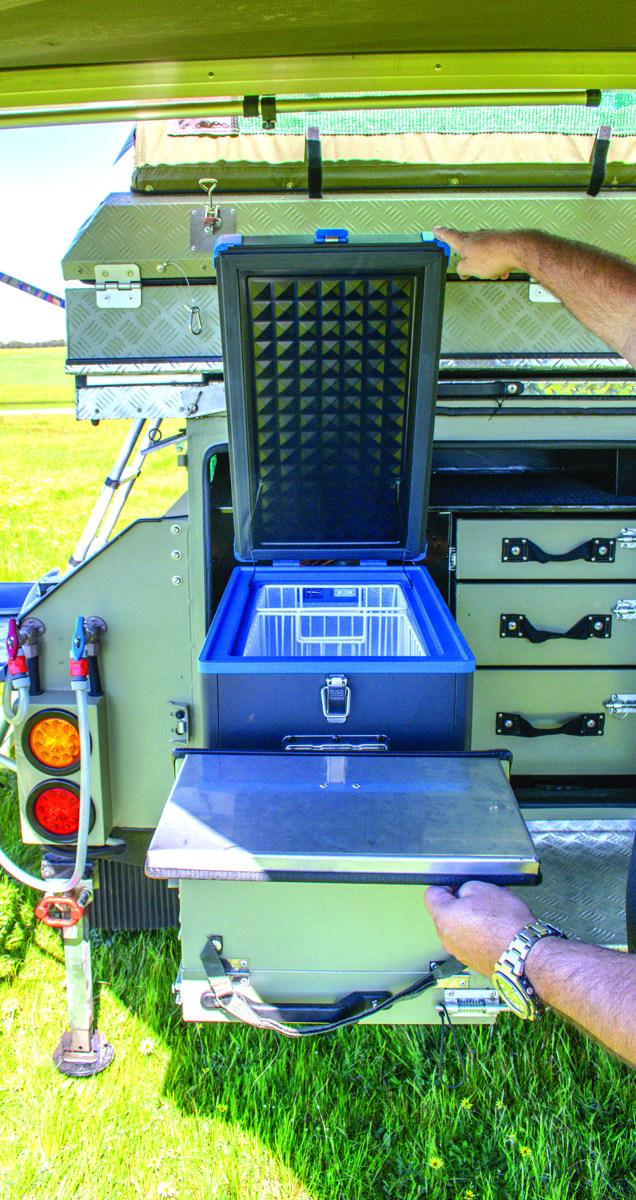


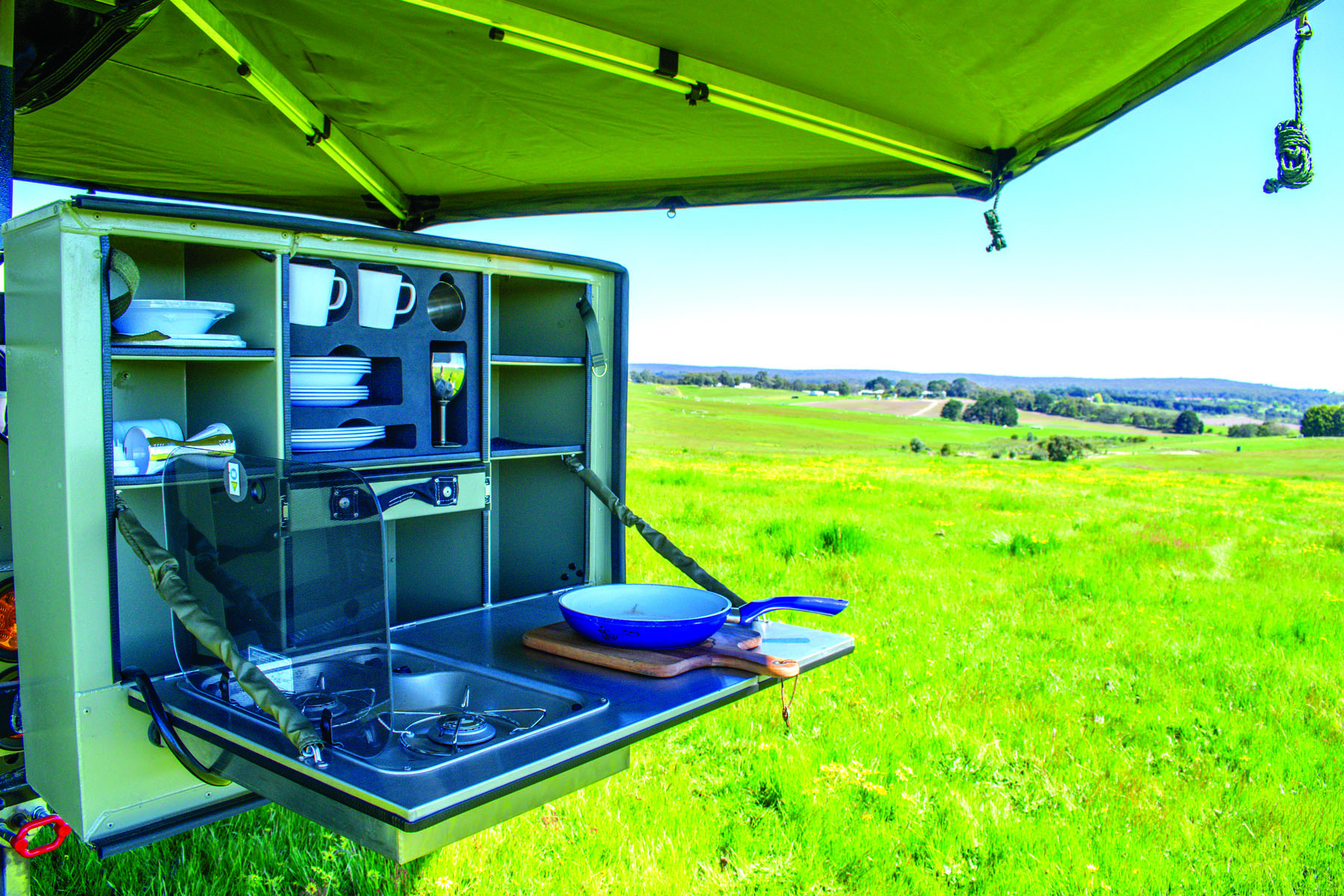
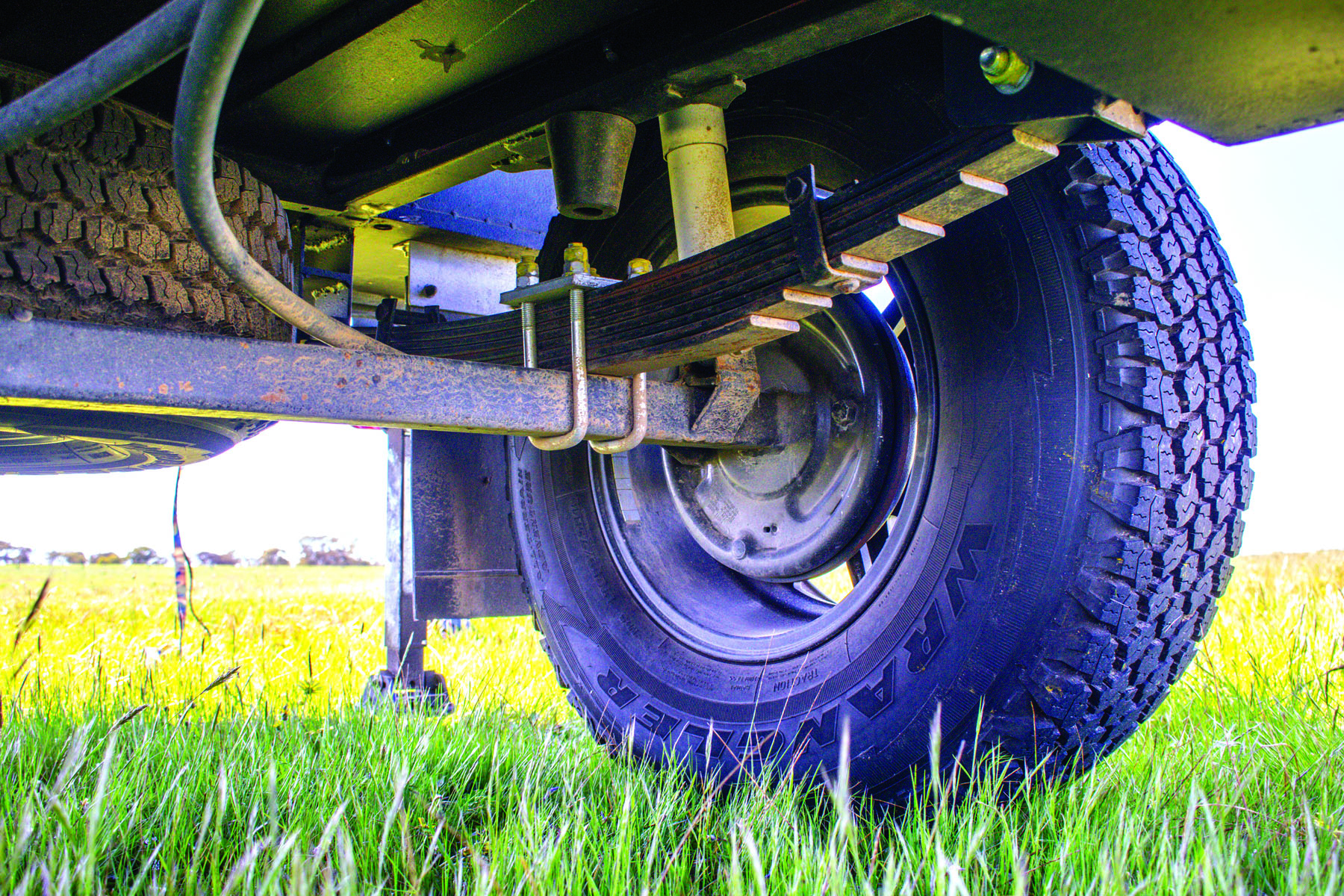
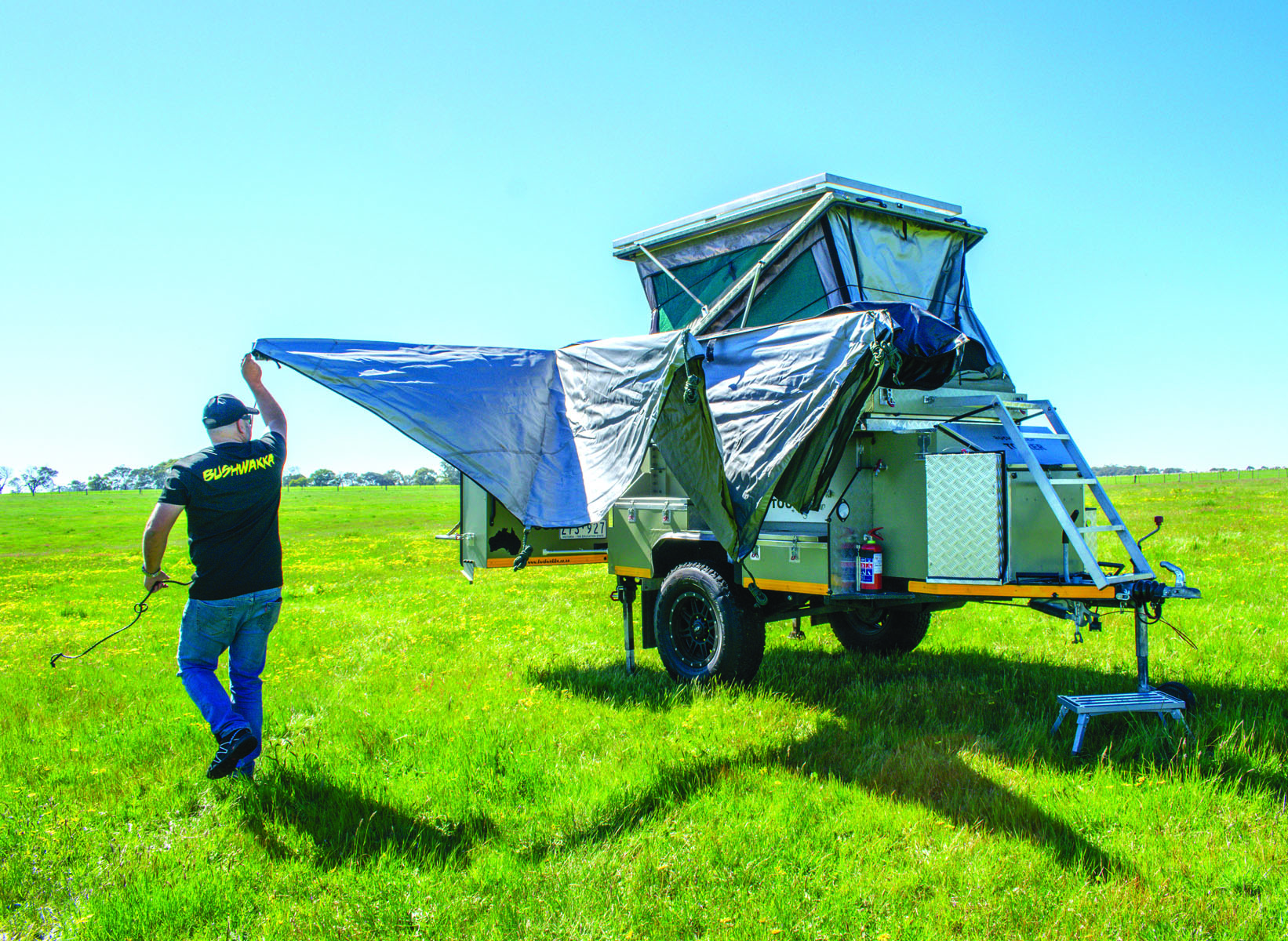
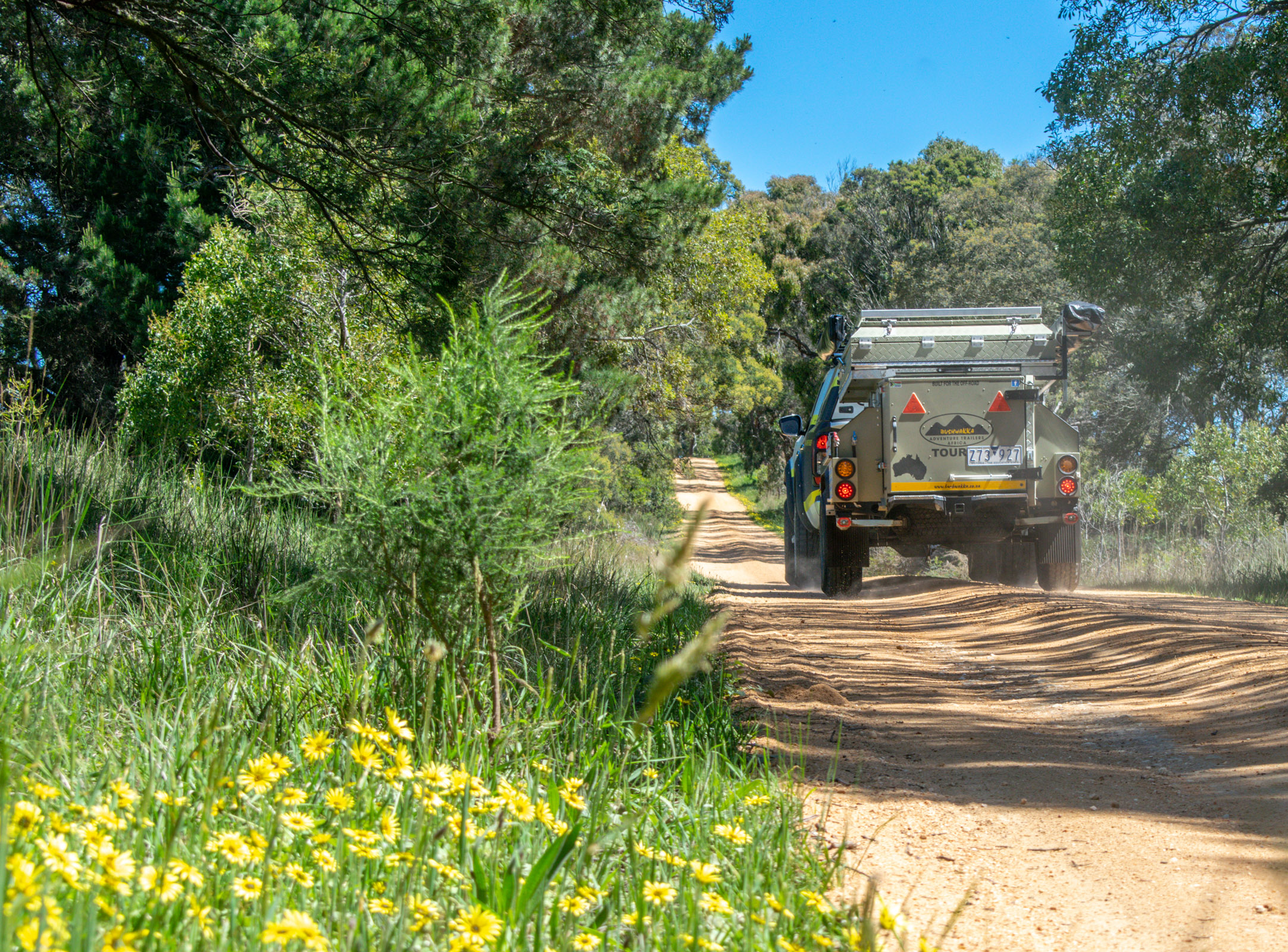
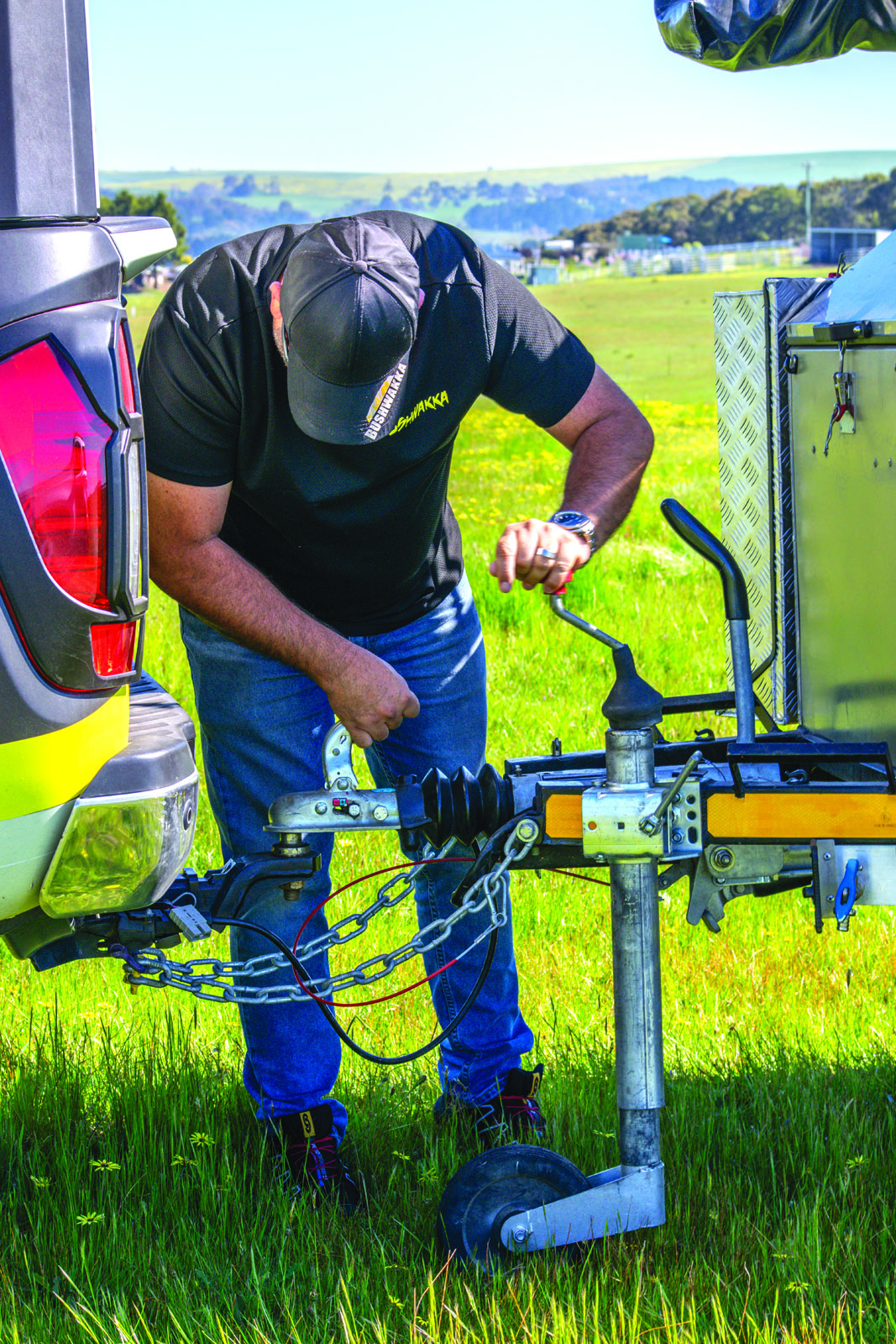
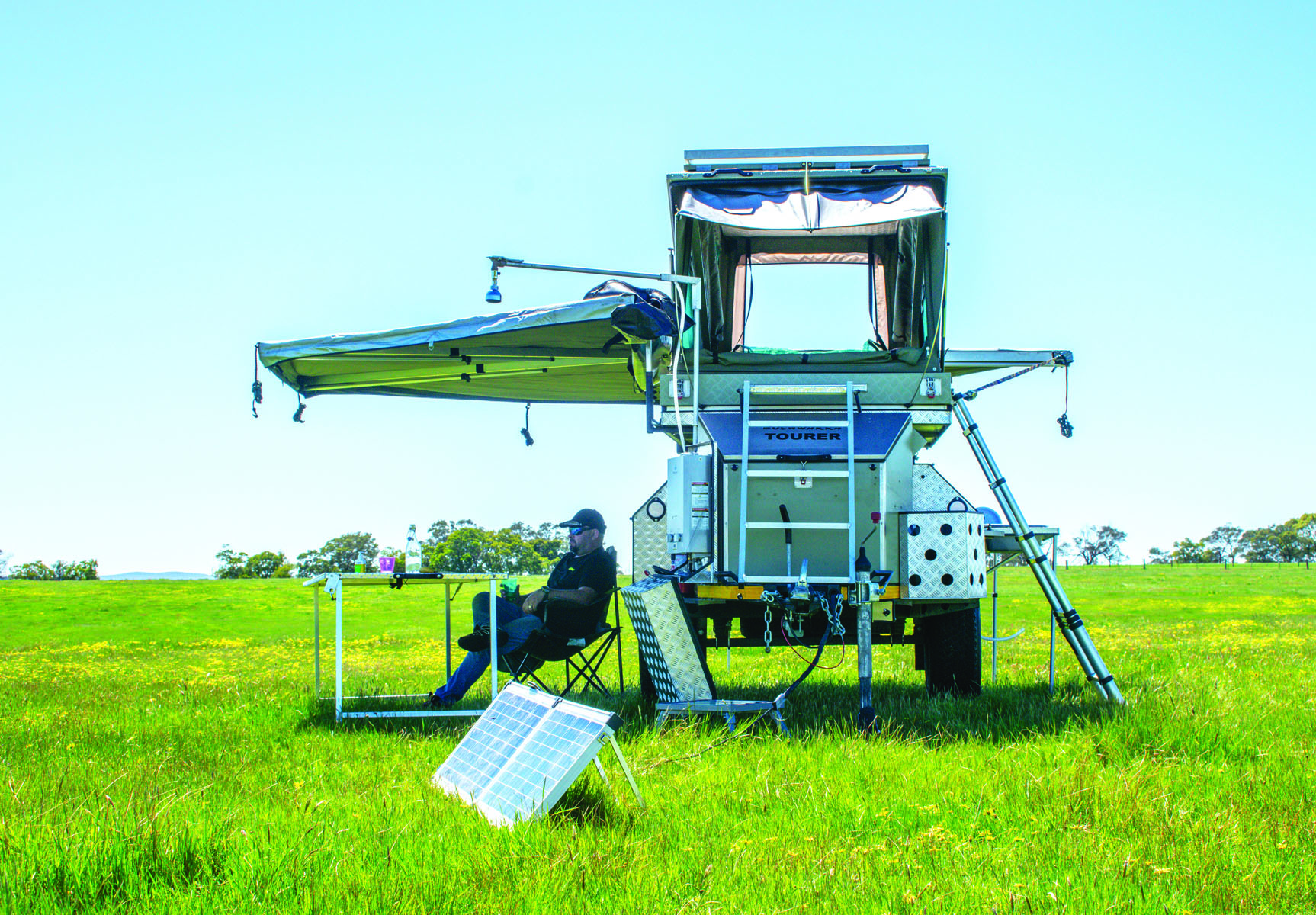
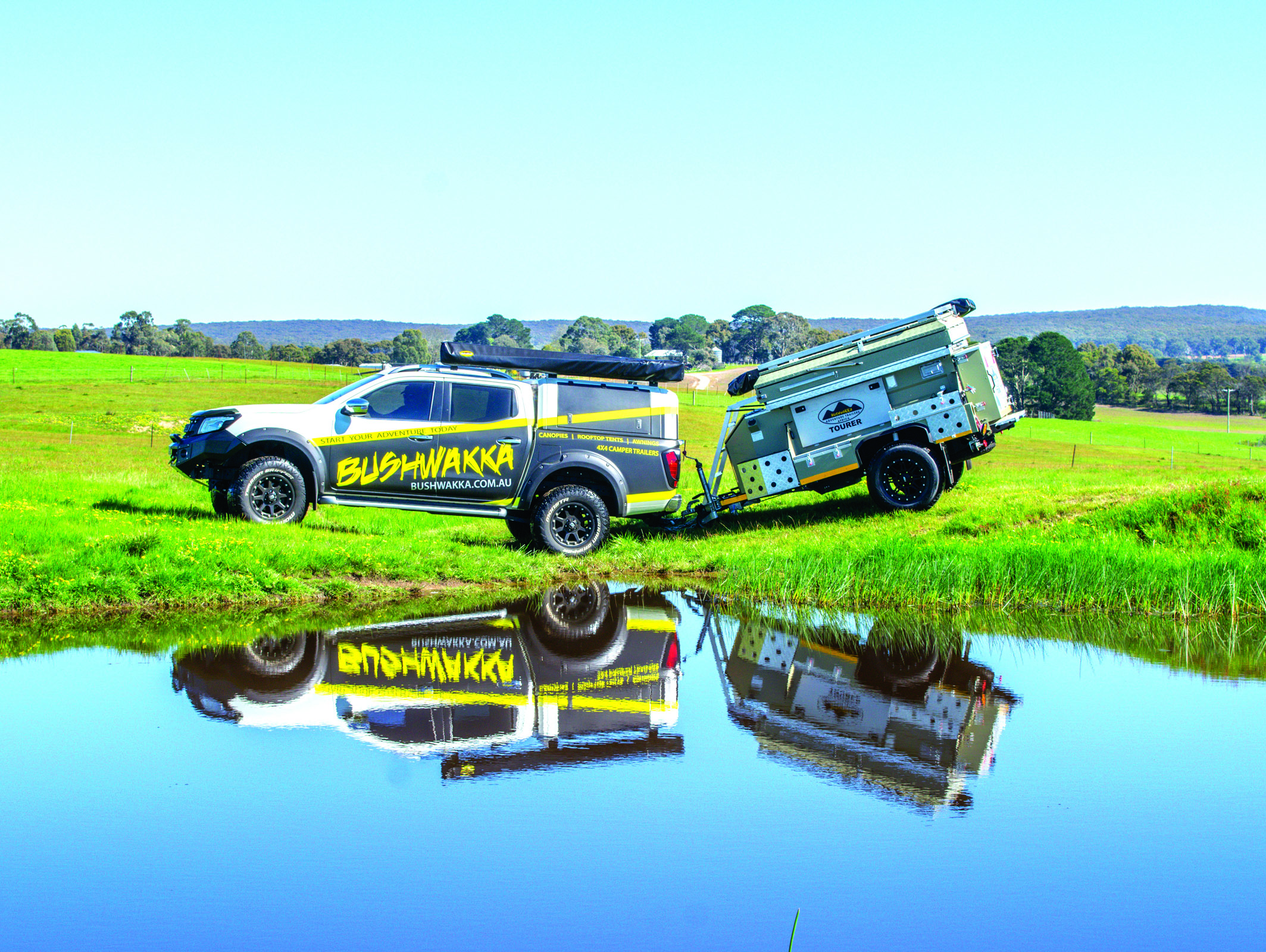
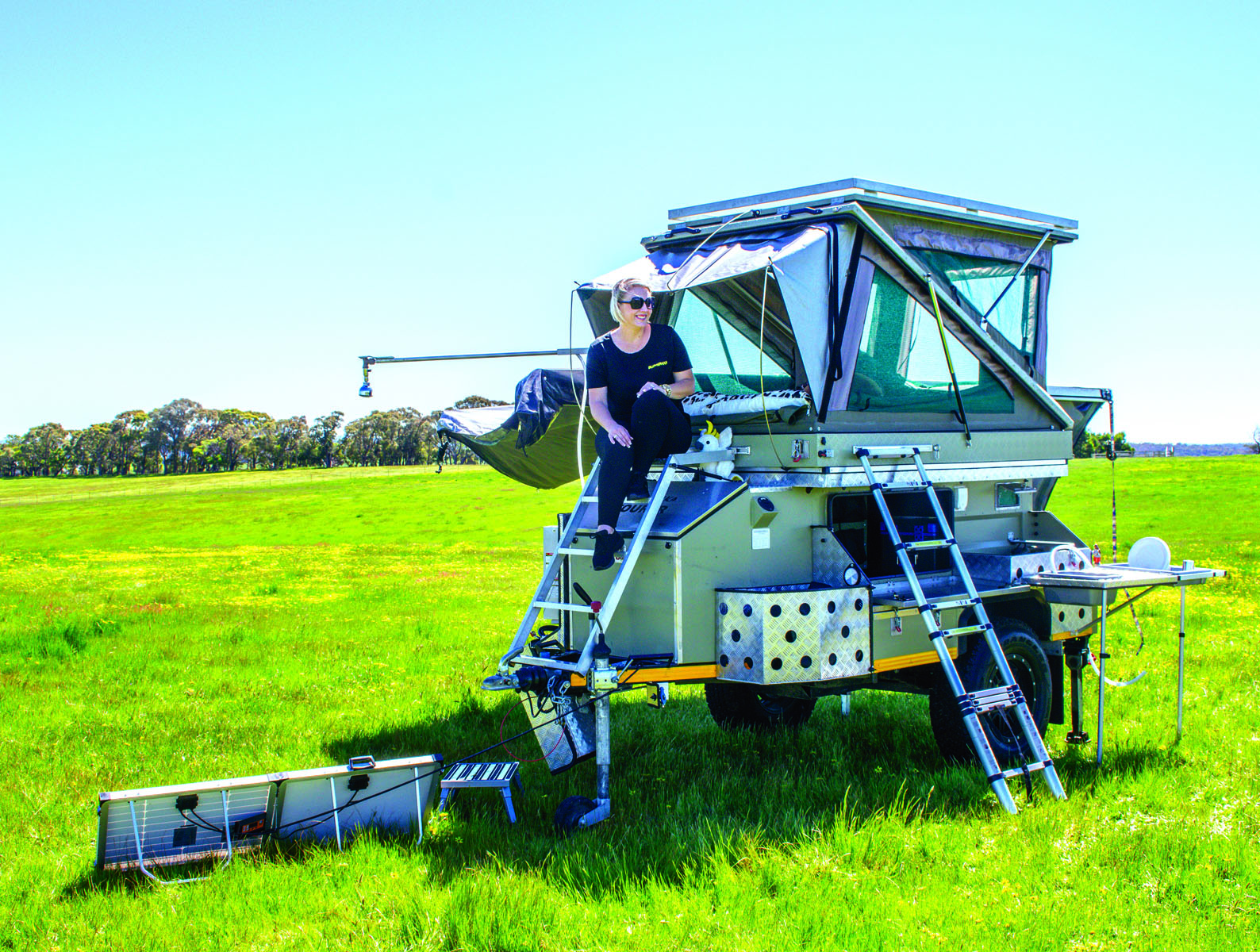
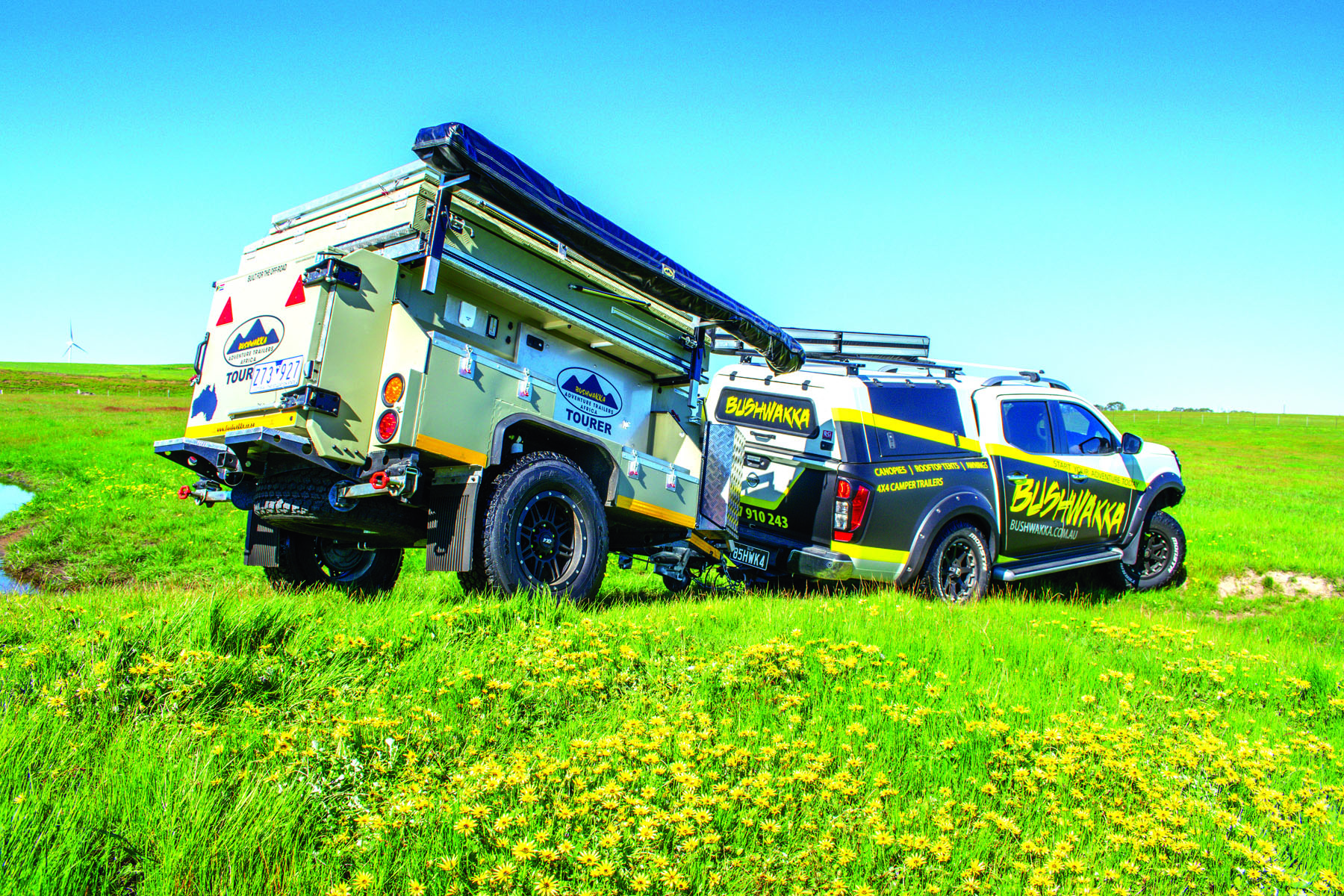
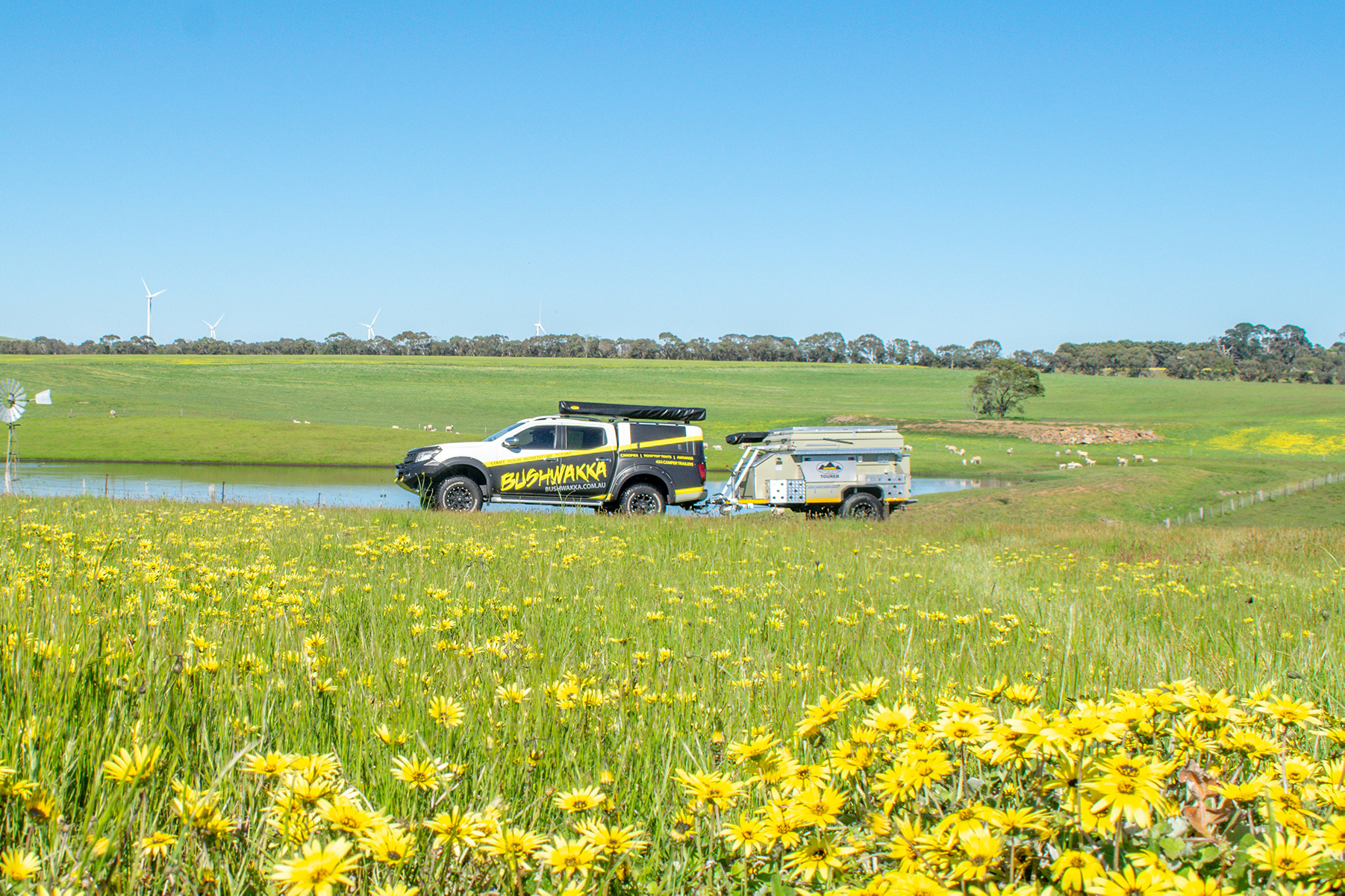
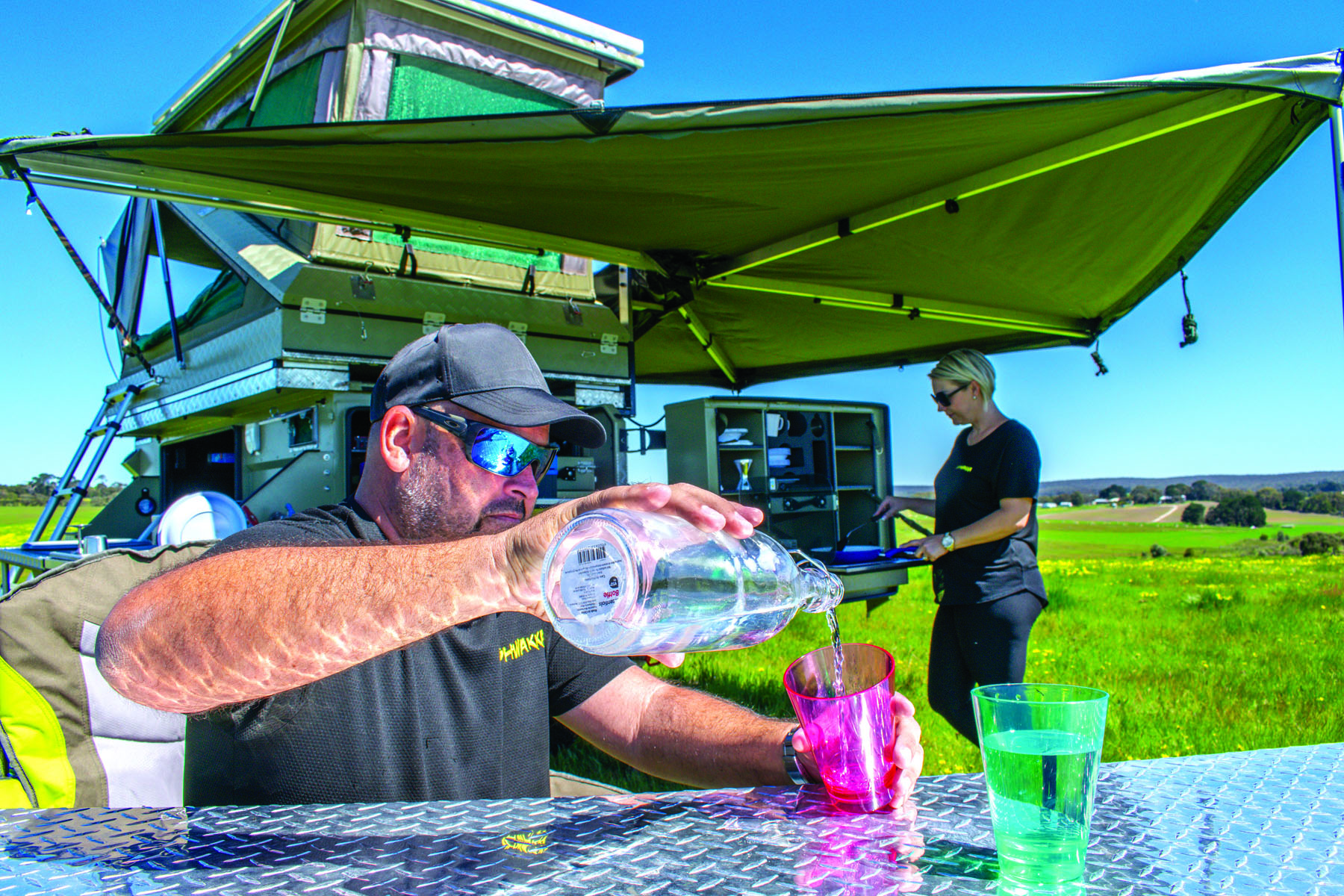
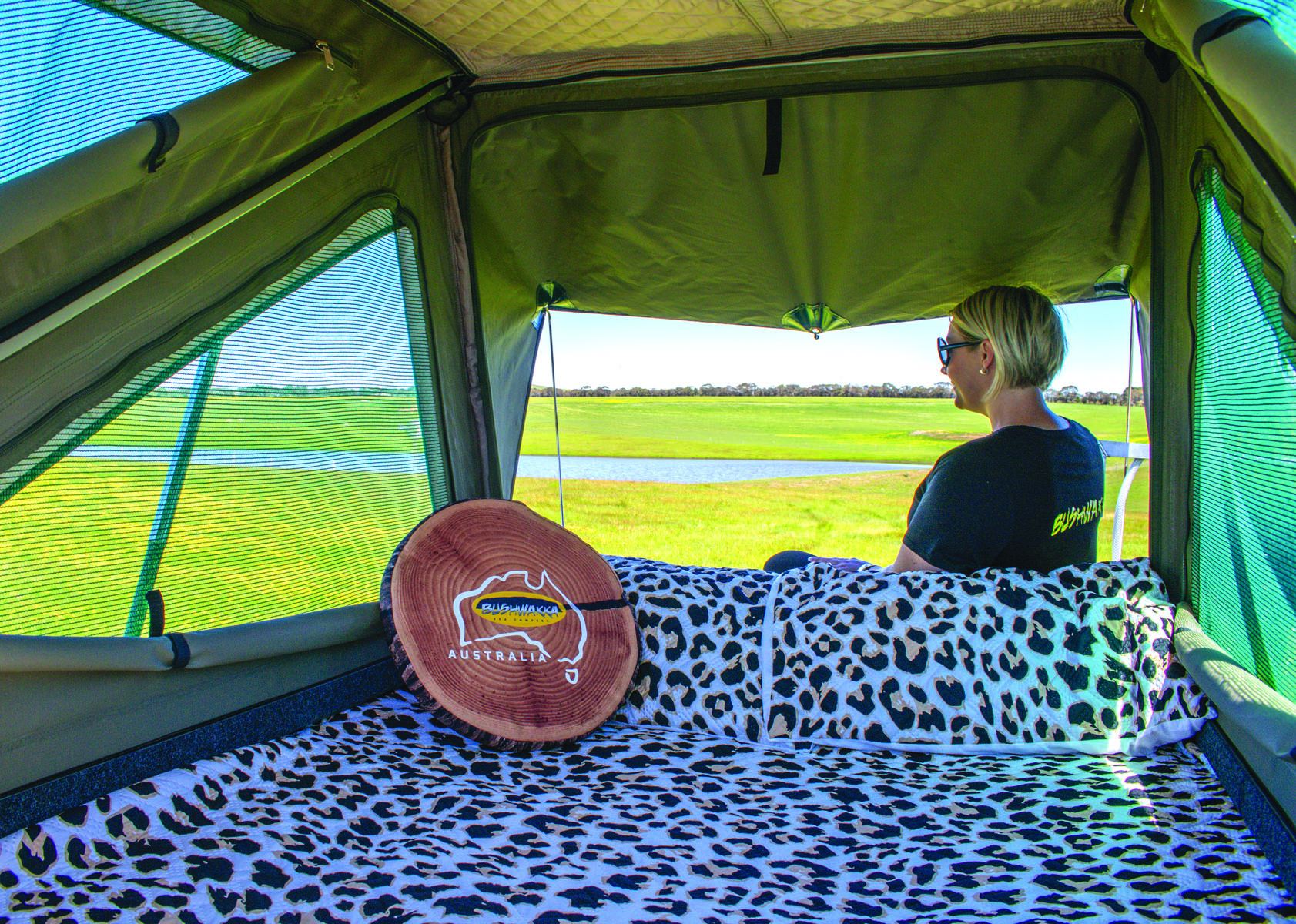
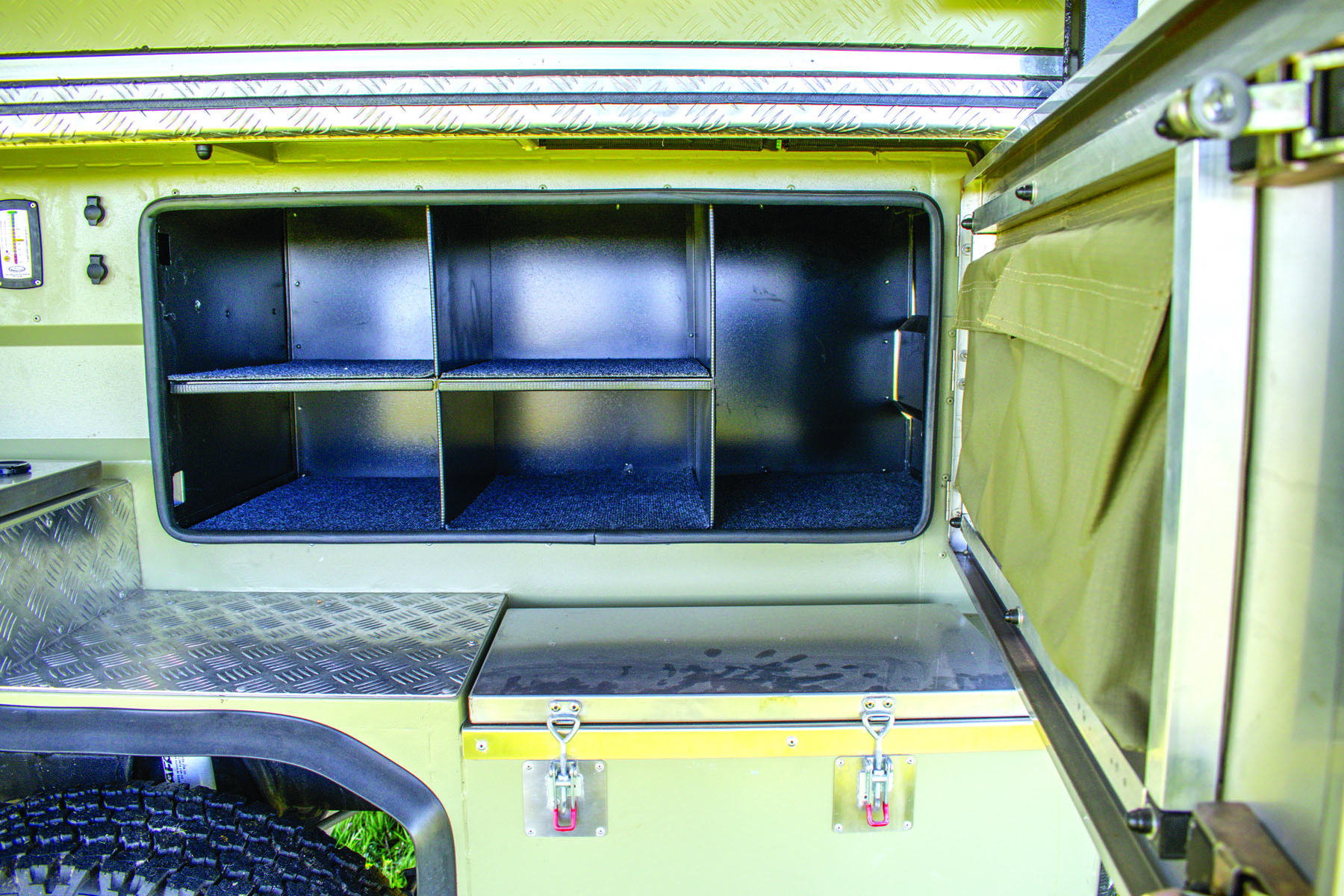
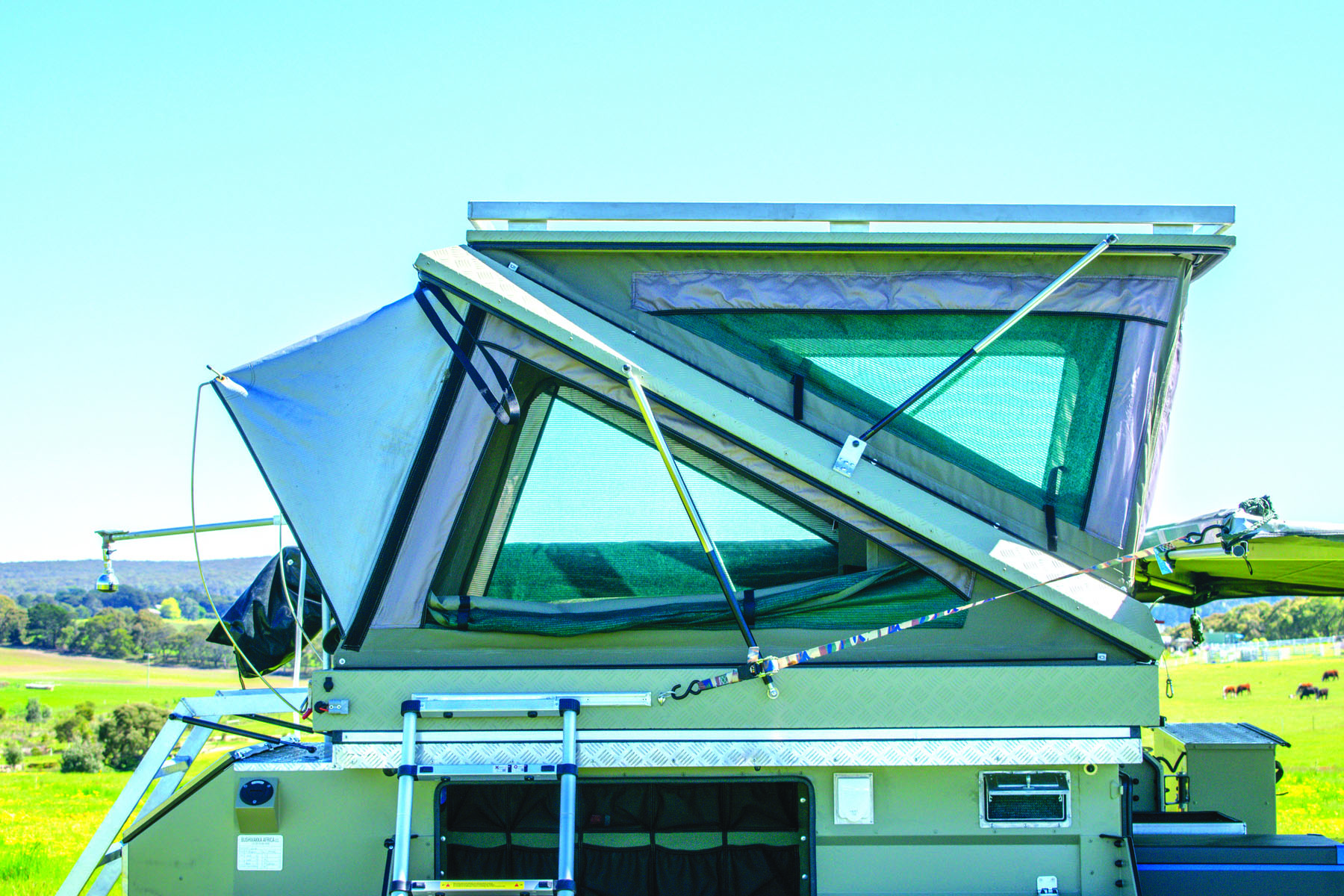
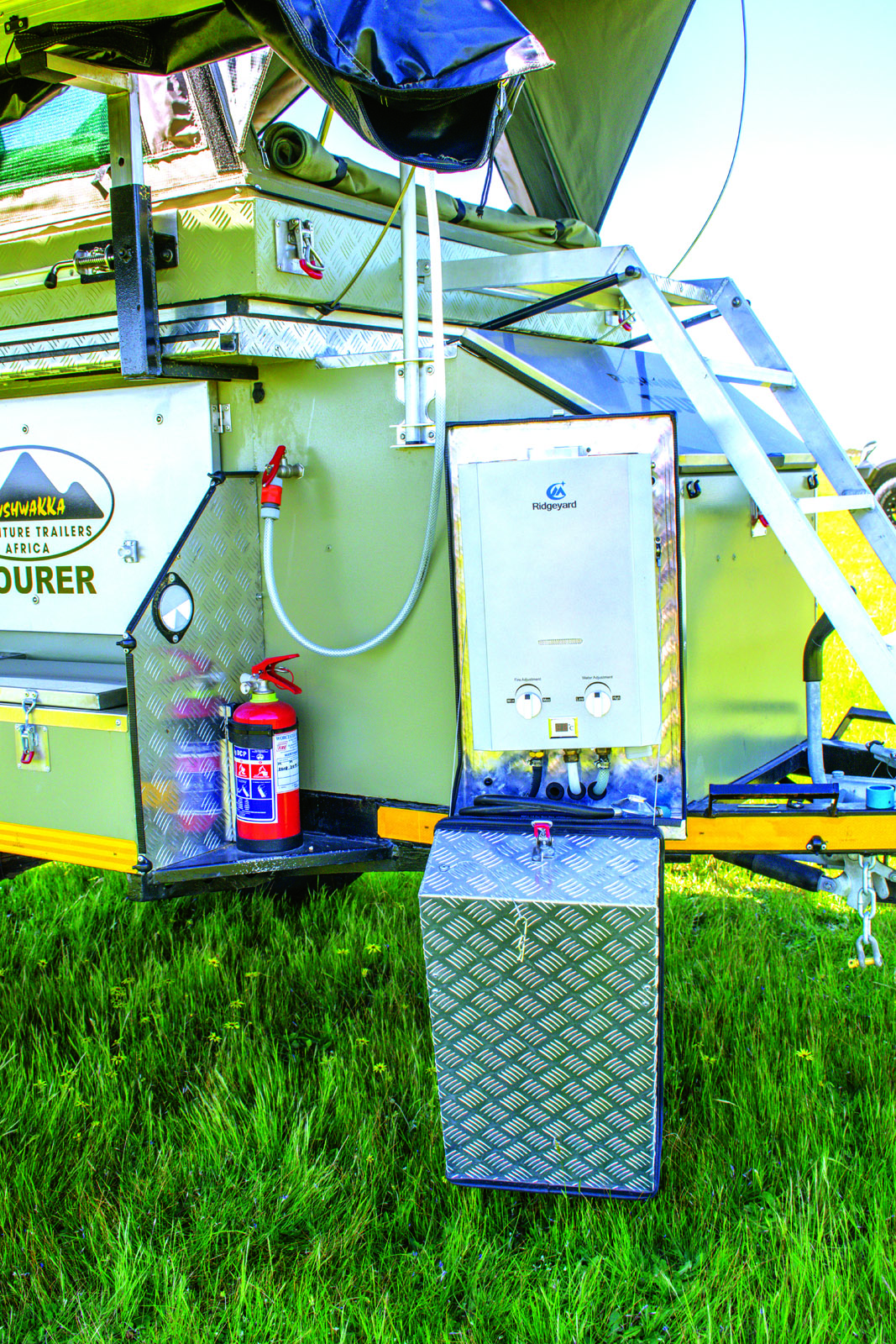
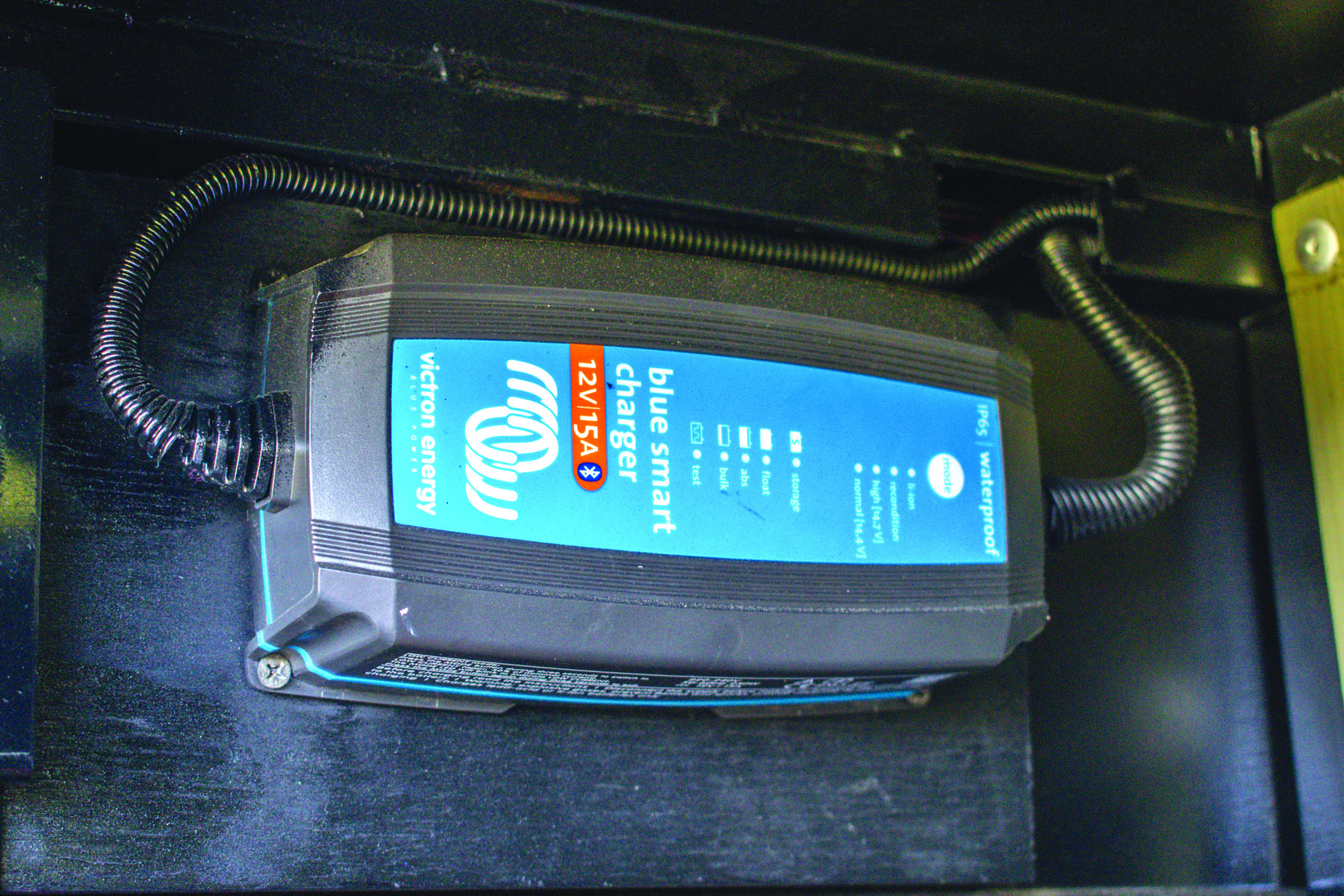
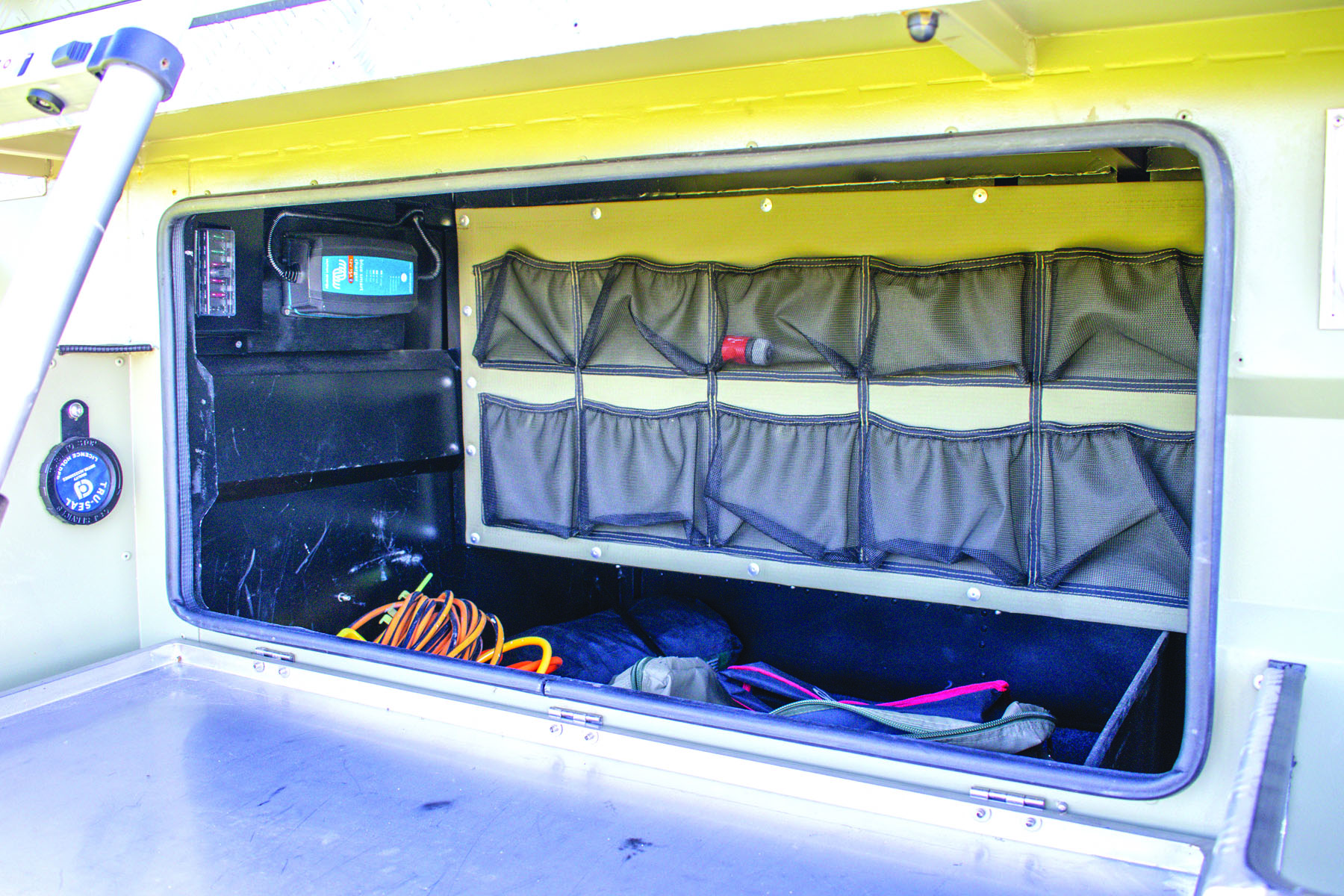
ROUGH N’ TUMBLE
You could just about hitch the Bushwakka Safari Tourer to a Yamaha PW50. The camper weighs a tiny 800kg Tare, making it potentially lighter than the nearby bull — and a majority of other camper trailers on the market.
This would honestly be a fly on the back of a full-blown 4WD with a braked towing capacity of 3000kg or 3500kg. Even softroaders will be able and willing; for example, the Nissan X-Trail and the Holden Captiva with their modest 1500kg allowances. To tow a Safari Tourer you don’t have to buy a beefed up beast of a rig that will scare Grandma. Unless you want to, of course.
The light weight also keeps fuel consumption down and improves performance offroad. And it goes hand in hand with the diminutive dimensions — not that we got to put these to the test in the open field. Driving through the gate into its grassy expanse, covered in cape dandelions, but no worn tracks, was like entering an open-world game: go where you like. With the added small print, if you enjoy getting bogged.
Thankfully the tyres on our review model were Goodyear Wrangler A/Ts, sized 265/75R16, on 4x4 Outback wheels with six studs, so we didn’t have to deal with that. A spare hides underneath and, if you do get stuck, there’s always a rear receiver for recovery.
The camper has seven heavy-duty leaf springs on each side; the weight is just right to ensure free suspension travel while reducing the bumpiness that can go with springs if load is too small. Lone Gabriel Safari shocks ensure smooth compression and decompression. The axle is live so there’s some transfer of impact, but its actual influence is hard to notice, even if you try.
The coupling is a German-made Knott coupling, rated to 2000kg, that goes onto a standard 50mm ball. There’s a good amount of flex, albeit not at Cruisemaster or McHitch levels. The associated overrun brake system works with a hydraulic ram, which offers a nice fluid smoothness to activate mechanical brakes back to the wheels. It’s an old school braking system, but it functions well and is suitable for a trailer of this weight.
WELCOME TO THE NEST
Magic mushrooms grow in cow dung. So when the Bushwakka Safari Tourer suddenly materialised in fully set-up mode, I figured I’d consumed a trace of hallucinogens while tying my shoe.
Once you’ve dropped the jockey and two rear stabilisers, you’re onto the rooftop tent. There’s no folding over of heavy elements nor pegging down for this hard shell double pop-top. You just release four clasps and then, from one end, give a gentle encouraging push.
This end rises on gas struts. You now have what looks like a clam shell rooftop tent. Then, you walk around the other side, push up and this side rises too. You’ve now got two triangles, forming a spacious rectangular interior. All of this in 15 to 20 seconds.
The next and final step is to secure the RTT awning over the main entry, which is over the drawbar and accessed via a ladder that permanently stows here (a portable step helps you reach the first rung). Secondary entry exists through either side, where a ladder slots into slide-tracking.
Say you rock up at 11pm in the belting rain. The above is all you need to do (there’s no need to add bedding, as the tent can pack down with it still inside). In this regard, this rooftop tent camper trumps side folds, forward folds or rear folds.
Inside it’s pretty lux. The 1500mm width is comfortable, though common; the 2100mm length is special. You could put your shoes at the end of the bed or a few valuables. Headroom is stellar on both ends, thanks to the non-slanted roof.
There’s six windows with heavy-duty midgescreen, so you’ll breathe easy and enjoy a radical 360 degree view.
On rainy and chilly nights, the insulated roof and waterproof 420gsm canvas will keep you warm and dry.
The high density foam mattress is 100mm deep, making it more comfy than the 75mm used in much competition. You have storage pockets down both sides, a fixed light on the roof and two 5V 1A USB outlets to cater to the charging needs of your phone or similar.
Pack down, as always, requires a tad more effort than set-up, but is still a piece of cake thanks partly to the internal occy strap drawing the canvas inwards.
The 100kg tent, known as The Nest, can be purchased as a separate item from Bushwakka. If you’re in the market for one of these, do yourself a favour and check it out.
LIFE ON TOUR
In a rooftop tent camper, there’s no internal living space. But the Bushwakka Safari Tourer has a sizeable outdoor living area with plenty of shelter to make up for it. Down the driver’s side, there’s a 270 degree Bushwakka Bush Fan awning, that extends around to create a dining or relaxation area and goes on to cover the kitchen, fridge, and most of the wash-up area.
You can prop this awning up with attached legs and tie it down with heavy-duty ropes. Its far end secures with a ratchet strap to a carabiner on the camper body.
You can fully enclose the awning with walls, if you decide to add these onto your purchase. DC and 240V outlets on the camper make it easy to keep this area lit up at night.
The awning is easy to pack up and down; it folds up into itself and is height adjustable so you can have it low when setting up and high when relaxing.
Still slightly paranoid about having consumed psilocybin, I watched as Johnny pulled a humongous table from under the rooftop tent — like a clown’s handkerchief, it just kept on coming. Four, maybe six, could dine at this portable inclusion with ease.
The kitchen is a swing-around; you unclasp it, pivot it 180 degrees, and fix it in place with a ball and socket. Then you undo a velcro strap and lower the front down. The chains attached to this reach full extension at 90 degrees and the resulting flat top creates your working space.
On it, to the left, is a two-burner with a lid that wisely opens to the side. You’ll have to attach the gas bottle each time. The rest of the fold-down space is free for cutting and other prep.
The backdrop of this is crockery and cutlery storage. Down each side there’s three shelves. In the middle, at the top, there’s sturdy foam with cut-out shapes made to fit the supplied crockery — a selection of cups, plates, bowls and more, that either stack on top of each other, or several deep. The genius of this system is that it nips rattling in the bud and ensures the crockery lasts in the face of corrugations. Below this cut-out foam, there’s a small cutlery slide-out drawer.
The fridge slide-out is close, to your left. The model I saw had a 40L Companion, but the slide can accommodate up to a 60L fridge. Off the end of the fridge slide is an additional work surface which sets up to allow you to take several things from the fridge during one visit.
The washing up area down the passenger side actually travels internally and has its own dedicated canvas storage bag. Like the secondary RTT ladder, it fits onto slide tracking when needed. There are hot and cold water taps which feed through lengths of hoses for washing up in the removable sink (these taps can also be used for showering). On the end there’s a dish drying rack.
An awesomely high shower head fits to the left of the drawbar. Right near it is the gas-run Ridgeyard HWS. You set up a simple Wanderer pop-up tent for this. No cassette loo is included but you could use one in this Wanderer tent, too.
There’s a diesel heater option available, in case you’re travelling to colder regions. Also, in many of the storage compartments there’s LED lighting, operated via localised switches. You always know which lights you’re turning on.
RUNNING THE SHOW
There’s a 70L water tank in the front box of the camper. That positioning would increase the downward weight on the tow ball a tad, but given the tank’s size and the camper’s light weight I’m not phased. You can carry two jerry cans of water down the side too, making 110L.
Johnny says there’ll be a second 70L aluminium tank on future iterations, this one on the underside above the axle to keep the centre of gravity low. It’ll have its own separate filler. That second tank will definitely be welcome — the payload allows for it and it’d enable you to kick on for longer!
The battery is 100 to 120Ah, but you can ask Bushwakka to add a second, giving you as much as 240Ah. Given the nifty purchase price I’d look to do so.
If you are at camp under clouds, and the fridge and other accessories run down 35Ah a day, the battery will last you three days before going kaput (not that you want to drain it that low). In practice the running time should be much longer. There’s an Anderson plug for recharging via your car’s alternator. You can use this same plug to charge up using the option of a 120W (or 140W or 160W) portable solar panel. If you want to boost your recharging ability further, there’s an Anderson plug pre-wired up the top on the RTT so you can permanently mount a panel or two.
All this charge runs through the very capable Blue Smart IP65 Charger by Victron Energy in a seven-stage process. The system has bluetooth so you can check the status of your battery remotely, just as you can with the National Luna 12V single battery monitor on the driver’s side of the camper body.
The camper has 240V courtesy of the optional Projecta modified sine wave 600W inverter. Six power points are accessed at the back, near the kitchen. You could charge your phone, camera and computer, and run a TV and maybe a sandwich toastie machine. Higher-draw items, like a kettle or hair dryer, will be off-limits.
On the review model, there was no set amount of gas per se, as there are no dedicated gas bottle holders. However, you can add two gas bottle rings for 9kg bottles if you wish. As it was, you could store bottles down the sides in the storage spaces with tie-downs or in the front box. There’d easily be room for two 9kg bottles of gas, depending on what else you need to bring.
ALONG FOR THE RIDE
There’s plentiful storage throughout — that’s one of the joys of having sleeping quarters on top of the camper, rather than taking up room inside. You can add up to 700kg before you hit the ATM.
The front box, over the drawbar, has extra room not taken up by the tank for you to store a few bits and bobs. The RTT ladder closes this off but it’s easy to lift into an upwards, out-of-the-way position, being on gas struts.
Down the driver’s side, at the back, is a storage compartment with two caverns, one deeper than the other. Towards the drawbar a big door swings out and secures with a ball and socket; inside there’s a 2x2 grid of four big box spaces, then a taller one on the right; this’d be an ideal clothes storage compartment. On the door are two big canvas pockets. Below this, there’s another storage cavern.
At the back, are three big drawers. They’re a pleasure to pull in and out, being lightweight alloy. Above this all is the short but deep and wide opening where the inverter fits.
Down the passenger side, there’s an open checkerplate receptacle with plenty of holes facilitating tie-down of goods. Back of this, folds down a wide door that reveals a huge opening. In here you put a lot of your exterior things, like the ladders and wash up, that travel in canvas bags, but there’ll still be some spare room too. There’s 10 mesh pockets fixed on the back wall. With this door up you can access another storage cavern below.
On the RTT roof, there’s a cargo tie down rail. You can load up to 100kg up here.
A JOY TO BEHOLD
As I drove back from the farmland north-west of Melbourne, towards the tightly packed streets dissecting the urban sprawl, I couldn’t stop thinking about the camper trailer I had just witnessed. I looked in the rearview mirror but alas, it was not there behind me.
What an offering the Bushwakka Safari Tourer is. Lightweight. Simple to set-up. Hugely practical. Inclusive of many features, yet uncomplicated. Provided by a friendly team in Johnny and Annelize. And impressively priced for what you get.
This is one bull I’d love to let loose.
SPECS
TRAILER
Tare 800kg
ATM 1500kg
Payload 700kg
Ball weight 80kg (unloaded)
Suspension Blade leaf spring suspension with single Gabriel Safari shock absorbers
Brakes Over-run mechanical
Coupling Knott, rated to 2000kg. Goes onto 50mm ball
Chassis 3CR12 stainless steel off-road
Drawbar 50mm x 75mm stainless steel boxed chassis
Body 3CR12 stainless steel
Tyres/Wheels 265/75R16 Goodyear Wrangler A/Ts on 4x4 Outback wheels with six studs
Style Rooftop tent camper
DIMENSIONS
Travel size 3.82m (L) x 1.78m (H) x 1.74m (W)
Body length (to front box) 3.01m
Approximate footprint (fully set-up) 4.6m x 5.7m
ACCESSORIES
Gas No set amount, as no gas bottle rings (however, you can choose to have two 9kg rings)
Water 70L in tank
Kitchen Swing-around with two-burner, foam-based cutlery and crockery storage, nearby sink with hot and cold water
Battery 120Ah with alternator and 120W portable solar panel charging. Projecta modified sine wave 600W inverter for 240V (optional)
PRICE AS STANDARD
$29,500
HITS
- Lightweight at 800kg Tare
- Compartmentalised storage
- One of the best rooftop tents out there
- Pretty solid value at $29,500
- Various set-up options, all quick
- Unique swing-around kitchen
- Lots of shade under 270 awning
MISSES
- Coupling and brakes are old school
- Gas rings not standard and gas not plumbed
CAMPER STAR RATINGS
Fit for intended purpose — 8
Innovation — 8.5
Self-sufficiency — 6.5
Quality of finish — 7
Build quality — 7
Offroadability — 7
Comforts — 6.5
Ease of use — 9
Value for money — 9
X-Factor — 7.5
ENQUIRIES
Bushwakka 4x4 Campers
Web bushwakka.com.au
Email enquiries@bushwakka.com.au
Phone 0457 910 243




